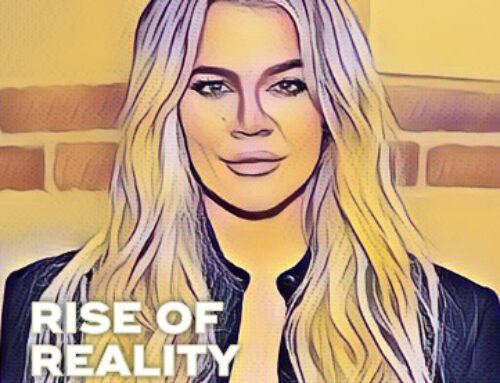The History of Acting
Acting is one of humanity’s oldest art forms, with a rich history dating back thousands of years. From ancient rituals to contemporary theatre, acting has undergone significant changes, innovations, and revolutions throughout history. The history of acting is a fascinating journey through time, revealing how acting has evolved and adapted to cultural, social, and technological changes.
In this article, we take a closer look at the major milestones in the history of acting, exploring the origins of acting, the emergence of different acting styles and techniques, and the challenges and opportunities facing the acting profession today.
The Origins of Acting: From Rituals to Theatrical Performances
The Beginnings of Acting: A Historical Overview
Acting has been around for thousands of years. The earliest records of acting date back to ancient Egypt and Greece, where performances were held in temples and public spaces as part of religious rituals. Over time, acting evolved to become a form of entertainment and storytelling, giving birth to theatre as we know it today.
The Role of Acting in Ancient Rituals and Festivals
Acting played an important role in ancient rituals and festivals. In many cultures, it was believed that acting out stories could bring the gods and goddesses to life and help people connect with the divine. Performances were often held in honor of deities, and actors were seen as vessels for transmitting messages from the divine to the living.
The Evolution of Acting: From the Greeks to the Romans
The ancient Greeks are often credited with the birth of theatre as a form of art. They developed a style of acting that emphasized the use of masks, exaggerated gestures, and a chorus to help tell stories. In contrast, the Romans focused more on spectacle and realism in their performances.
The Golden Age of Greek Theatre: The Birthplace of Modern Acting
The Legacy of Greek Theatre: Tragedy and Comedy
Greek theatre had a profound impact on Western culture, particularly in the areas of tragedy and comedy. Tragedies dealt with serious themes like justice and morality, while comedies were meant to be light-hearted and satirical. Both forms of theatre explored the human condition and helped audiences to connect with their emotions.
The Actor’s Craft in Greek Theatre: Masks, Chorus, and Performance Techniques
Acting in ancient Greece was a highly stylized art form. Actors wore masks that represented different characters, and they used exaggerated gestures and vocal techniques to convey emotions and tell stories. The chorus played an important role in Greek theatre, serving as a kind of narrator or commentator for the audience.
The Influence of Greek Theatre on Western Acting and Theatre
Greek theatre had a lasting influence on Western theatre and acting. Many of the techniques and conventions developed by the Greeks are still used today, including the use of masks and the chorus. Greek theatre also helped to establish acting as a profession and paved the way for the development of modern theatre.
The Renaissance and the Emergence of Shakespearean Acting
Theatrical Innovations during the Renaissance: From Page to Stage
The Renaissance was a time of great innovation in theatre. Playwrights like William Shakespeare emerged, and new technologies like the printing press made it easier to distribute scripts. As a result, theatre became more popular and accessible to a wider audience.
The Actor’s Voice and Movement in Shakespearean Acting
Shakespearean acting was characterized by a focus on the actor’s voice and movement. Actors were expected to have a clear and powerful voice that could be heard by the entire audience, and they were trained in a variety of movement techniques to help them convey emotion and embody their characters.
The Rise of the Star Actor in Renaissance Theatre
During the Renaissance, actors began to achieve fame and celebrity status. This was in part due to the popularity of playwrights like Shakespeare, who wrote roles that were specifically tailored to the talents of individual actors. As a result, acting became a more respected and lucrative profession.
The Rise of Method Acting: From Stanislavski to Brando
The Origins of Method Acting: Stanislavski’s Contribution
Method acting is a style of acting that emphasizes the actor’s process and emotional authenticity. It was developed by Russian actor and director Konstantin Stanislavski, who believed that actors should draw on their own experiences and emotions to create realistic performances.
The Actor’s Process in Method Acting: Emotional Memory and the “Magic If”
Method acting involves a rigorous process of preparation and rehearsal. Actors use techniques like emotional memory and the “magic if” to help them connect with their characters and bring authenticity to their performances. Method acting is still widely practiced today and has had a profound impact on the field of acting.
The Impact of Method Acting on Acting Training and Performance
Method acting has had a significant impact on the way actors are trained and the way performances are approached. Many acting schools and programs now teach method acting techniques, and actors are often expected to bring a high degree of emotional authenticity to their work. Method acting has also shaped the way audiences perceive and respond to performances, with a greater emphasis on psychological realism and authenticity.
The Challenges Faced by Actors in the Ever-Changing Industry
Acting is a highly competitive industry, and actors constantly face challenges when it comes to securing work and building a sustainable career. Some of the common challenges include facing rejection, dealing with job insecurity, and navigating the complexities of the industry. In addition, the rise of digital media and the changing landscape of entertainment means that actors need to constantly adapt to remain relevant and competitive.
The Opportunities and Potential of Emerging Technologies in Acting
With the rise of technology, new opportunities are emerging for actors, such as virtual reality performances or voice acting for video games. As technology continues to evolve, there may be yet undiscovered opportunities for actors to work across different mediums and platforms, creating new forms of storytelling.
The Future of Acting: Balancing Tradition and Modernization
As the world and the entertainment industry continue to change at a rapid pace, actors need to find ways to balance tradition and modernization in their craft. While traditional methods of acting will always have a place in the industry, actors need to be open to embracing new techniques and ways of working to remain competitive and relevant in a rapidly changing landscape. The future of acting will be shaped by the ability of actors to adapt and evolve their craft while still honoring the art form’s rich history and tradition. In conclusion, the history of acting is a testament to the power of creativity, imagination, and human expression. From ancient rituals to modern cinema, acting has continued to evolve and adapt, with new styles, techniques, and innovations emerging every year. While the acting profession faces many challenges and uncertainties in the 21st century, its legacy and influence remain as strong as ever. Whether it’s through drama, comedy, tragedy, or performance art, acting will continue to inspire, entertain, and challenge audiences for generations to come.
FAQ:
What is the oldest recorded example of acting?
The oldest recorded example of acting can be traced back to the ancient Egyptian ceremonies of the god Osiris and the Greek religious festivals of Dionysus, both of which involved ritual performances and dramatic representations.
How has the digital age impacted the acting profession?
The digital age has had a profound impact on the acting profession, with new forms of digital media and performance emerging, such as motion capture, green screen acting, and virtual reality. It has also created new opportunities for actors to connect with audiences and showcase their talent through social media, online platforms, and video sharing sites.
What are some examples of contemporary acting techniques?
Contemporary acting techniques include devised theatre, immersive performance, physical theatre, and post-dramatic theatre, among others. These techniques challenge traditional notions of character, plot, and spectacle, emphasizing collaboration, experimentation, and audience participation.
What are some of the challenges facing the acting profession today?
The acting profession faces many challenges today, including lack of diversity and inclusivity, competition for roles, limited economic opportunities, and the impact of the COVID-19 pandemic on the theatre industry. However, the acting profession also offers many rewards, including the opportunity to express oneself creatively, collaborate with other artists, and inspire and entertain audiences.




